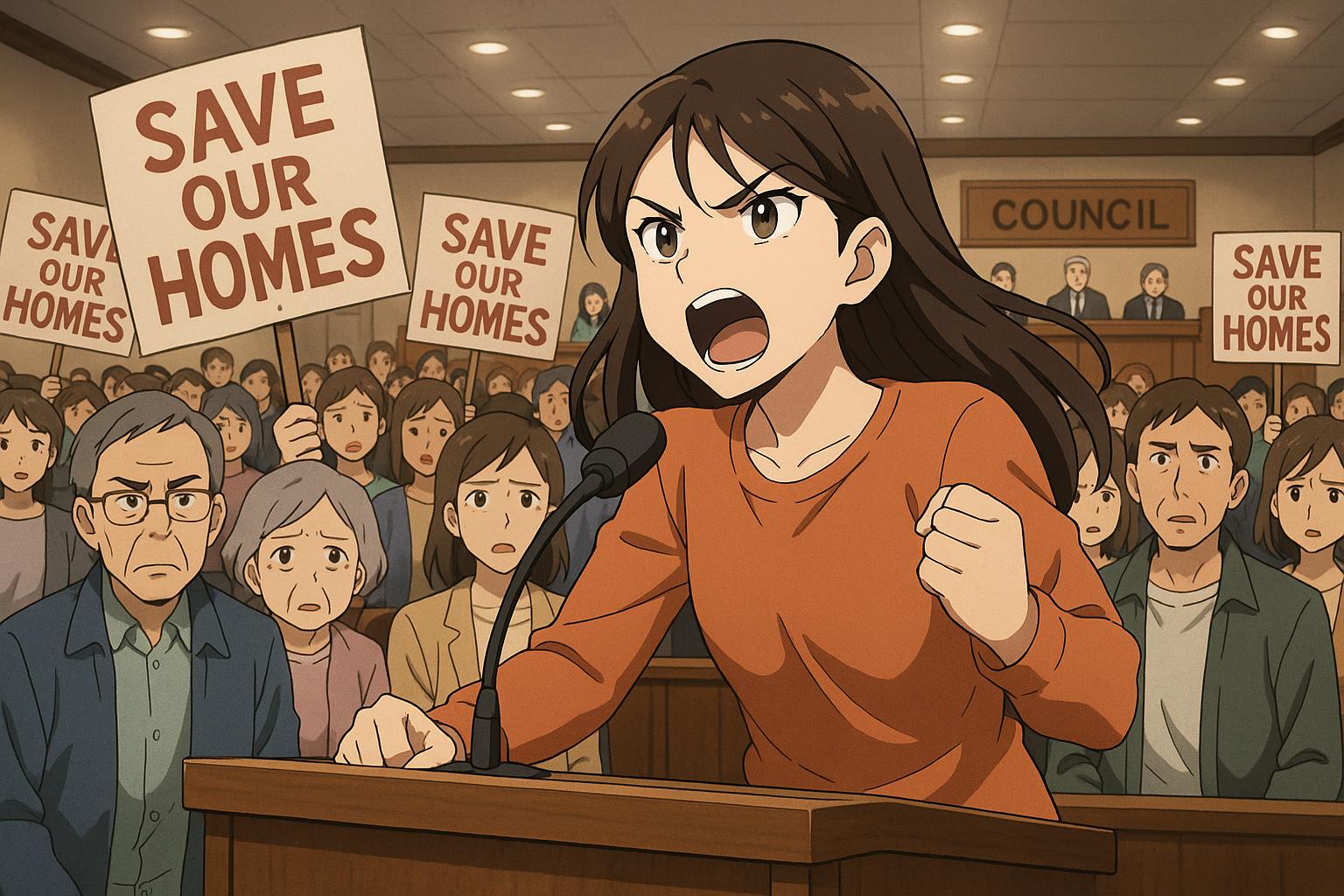Torry residents recently expressed their heartfelt concerns during an emotionally charged council meeting, pleading with officials to refrain from demolishing their homes, which have been found to contain Reinforced Autoclaved Aerated Concrete (RAAC). This material has been deemed hazardous, leading to plans for evacuating around 500 homes in the Balnagask area due to fears of structural failure. Although many tenants have been relocated to alternative accommodations, homeowners who purchased their properties from the council find themselves trapped in a protracted limbo, facing potential financial ruin as they are offered drastically reduced prices for homes they can no longer inhabit.
The urgency of their plight is underscored by the Trapped by Raac campaign, which has garnered significant public support, including a petition with thousands of signatures advocating for a fair resolution. During the recent council meeting, residents from the Torry Raac Community Group voiced their frustrations, proposing alternative solutions to demolition. These included the possibility of swapping their affected homes for other properties in Balnagask or similar locations, ideally with the council covering the necessary repairs. Many of these homeowners asserted that a blanket approach of demolition disregards viable, less destructive solutions which could allow families to remain within their community.
However, council officials have expressed skepticism regarding these alternatives. They characterised the notion of repairing the existing homes as "complex" and "high risk”, primarily citing that any potential actions would hinge on available funding. This sentiment prompted anxiety among residents, especially when officials suggested that homeowners could be expected to contribute to the costs of repairs. This raised a plea from campaigner Raymond Davidson, who noted the irony of requiring financially burdened residents to pay for essential repairs when the council had approved hefty funding to facilitate demolition instead.
The council's decision to proceed with demolishing these homes has faced significant backlash. Critics have pointed to the emotional and social toll of displacing 138 individuals, many of whom have suffered from deteriorating mental health as a result of the turmoil. Testimonials shared during the council meeting highlighted the distress felt by families, with some individuals even contemplating dire actions in response to their situation. Former councillor Alex Nicoll underscored the misdirected blame often placed on government funding, urging his colleagues to assess their responsibilities to immediate constituents rather than engaging in a protracted blame game.
In a wider context, the situation mirrors national concerns regarding the integrity of housing built with RAAC. Other local authorities across the UK have similarly faced dilemmas as this construction material has shown signs of failure in various contexts. In Aberdeen, the council's decision estimates a total expenditure of £150 million required to address the RAAC crisis fully. This includes both demolition costs, projected to reach up to £25 million, and subsequent rebuilding efforts poised to take several years and enormous financial investment to complete.
Despite the sombre mood enveloping the council chambers, community advocates remain steadfast in their resolve to press for a more compassionate and practical approach. Following the heated meeting, campaigners gathered in nearby cafes to strategise their next steps, pledging not to let the situation fade into apathy. The sense of community spirit among these Torry residents is palpable, with many asserting that their fight is not merely about bricks and mortar but the soul of their community itself, which risks being irrevocably damaged by the ongoing crisis.
The council has indicated that it may explore providing loans to help homeowners meet repair costs, a move that some see as merely a stopgap rather than a solution. As the community continues to grapple with uncertainty, the emotional cost of the council's decisions weighs heavily on those forced to leave behind cherished homes and communal bonds, raising the question of how government bodies balance safety concerns against the very real human costs of their policies.
Reference Map:
- Paragraph 1 – [1], [3]
- Paragraph 2 – [1], [4], [5]
- Paragraph 3 – [2], [6]
- Paragraph 4 – [2], [4]
- Paragraph 5 – [1], [7]
Source: Noah Wire Services
